Moon landing quiz and bizarre facts about Apollo 11
It’s the moment that millions of people around the world watched in awe. To celebrate we’ve made a quiz featuring one very tough question.
It’s nearly 50 years since Neil Armstrong became the first human to ever set foot on the Moon during NASA’s famous Apollo 11 mission.
But while the late American astronaut is now a household name, there are some astonishing secrets that you probably don’t know about the Moon landing.
From condom-shaped loo bags to a heartfelt promise Armstrong made to his worried gran, plenty of things went on behind the scenes.
We’ve put together a quiz to test how much you know about the Moon landing.
It features questions like — What is the radius of the moon? — which only 21% of people have successfully answered.
11 BIZARRE FACTS
Here, as the world prepares to mark five decades since the successful July 20, 1969, mission, we reveal 11 bizarre facts about the trip and the astronauts involved...
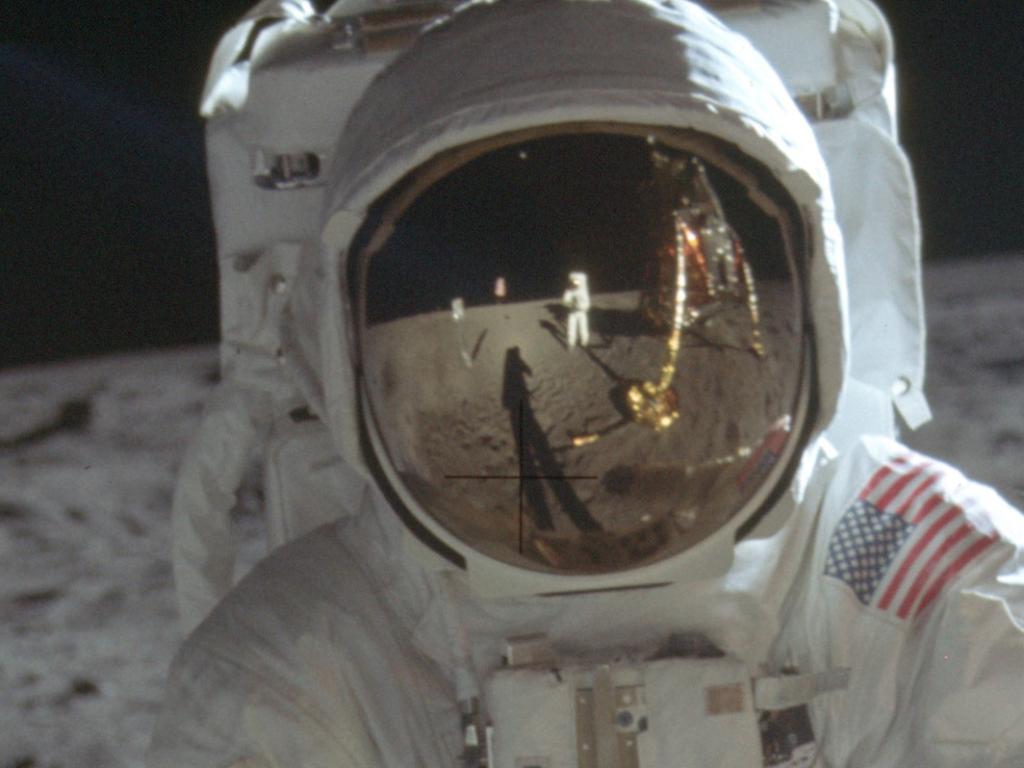
1) AUTOGRAPHS AS LIFE INSURANCE
Apollo 11 was a high-risk mission, so astronauts Neil Armstrong, Buzz Aldrin and Michael Collins didn’t know whether they would return to Earth alive, if at all.
But instead of taking out life insurance — which we imagine would have been ridiculously expensive — they came up with an ingenious plan involving their signatures.
The crew, who by this point were already famous, signed hundreds of envelopes before their journey to the Moon, which were postmarked on important dates.
These postmarked envelopes, known as ‘covers’, were then distributed to their families by a close pal to act as ‘life insurance’ in the event the astronauts died.
“If they did not return from the Moon, their families could sell them — to not just fund their day-to-day lives, but also fund their kids’ college education and other life needs,” space historian Robert Pearlman tells NPR.
Fortunately for the astronauts and their loved ones, the autographs weren’t needed.
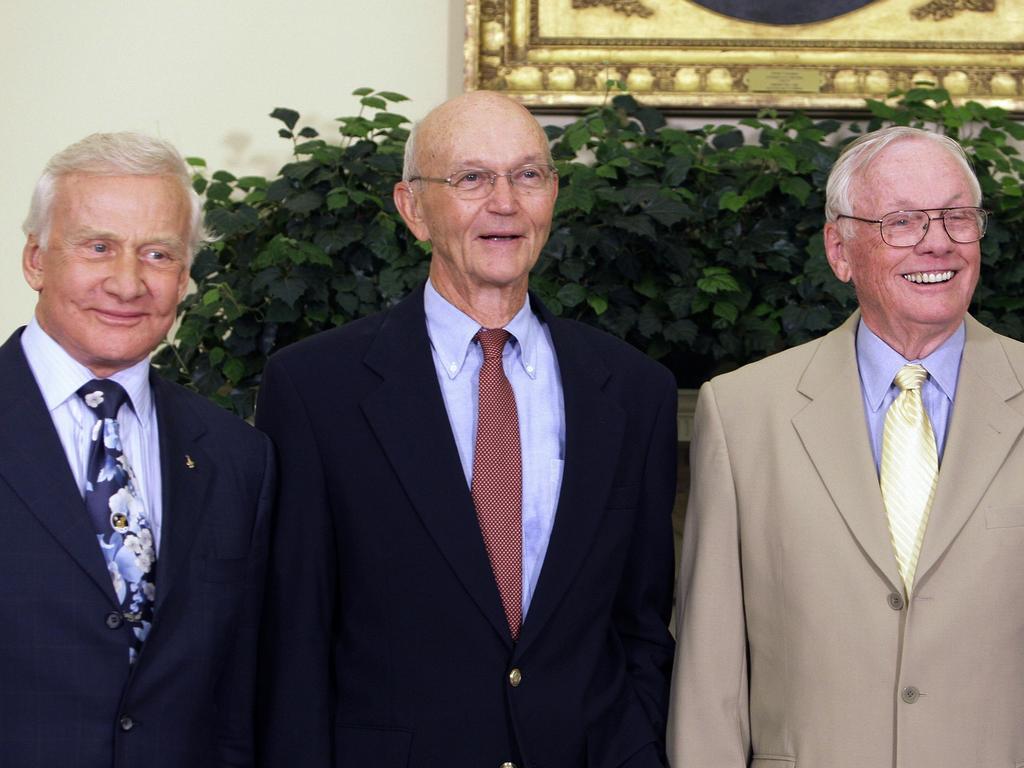
2) THEY PEED INTO ‘CONDOMS’ AND WORE NAPPIES
A toilet on the Moon? Not a chance.
Armstrong, Aldrin and Collins didn’t even have the luxury of a loo onboard the Apollo 11 spacecraft as they were propelled towards orbit from Florida in front of one million spectators.
During their eight days in Space, the trio had to pee into a ‘roll-on cuff’ — a rubber tube that resembled a condom and was hooked up to a ‘receiver’ tube and a collection bag.
They had to change the cuff every day.
And the process for defecating was even more disgusting.
Astronauts on Apollo missions relied on an “extremely basic system” which involved taping a plastic bag to their buttocks to capture their faeces, a NASA report states.
After going to the toilet, they then had to seal up the bag, knead it, roll it into the “smallest possible volume” and store it so they could bring it back to Earth.
The astronauts couldn’t use the same system when they were on the Moon itself, so they wore an absorbent pair of undershorts instead — essentially, a nappy.
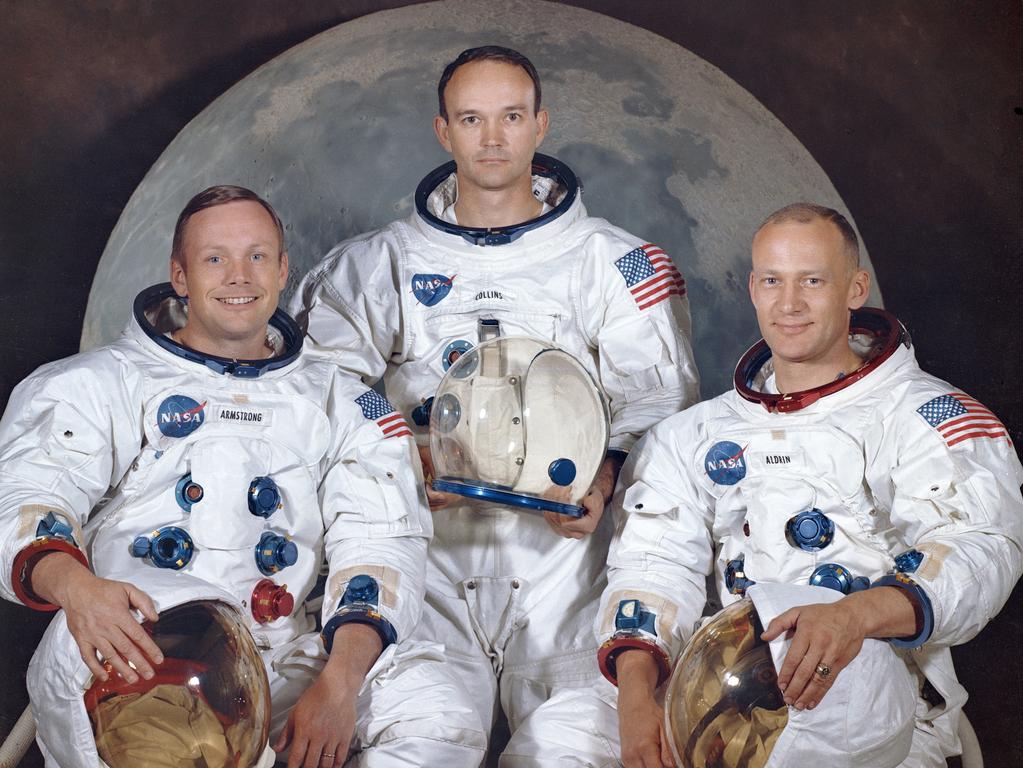
3) THEIR SPACESUITS WERE MADE BY BRA EXPERTS
Armstrong was wearing a custom-made spacesuit — estimated to cost around $100,000 (£79,000) at the time — when he took his famous first steps on the moon.
But what many people don’t know is that the outfit was actually created by bra experts.
Seamstresses who usually made Playtex bras and girdles were given the important task of making the suits after the International Latex Corporation won the Apollo suits contract.
The team, who were all female, had to be incredibly precise.
Even a 1/32-inch stitching error on one of the 21 layers of fabric could lead to a suit being deemed unworthy of Space, according to Smithsonian magazine.
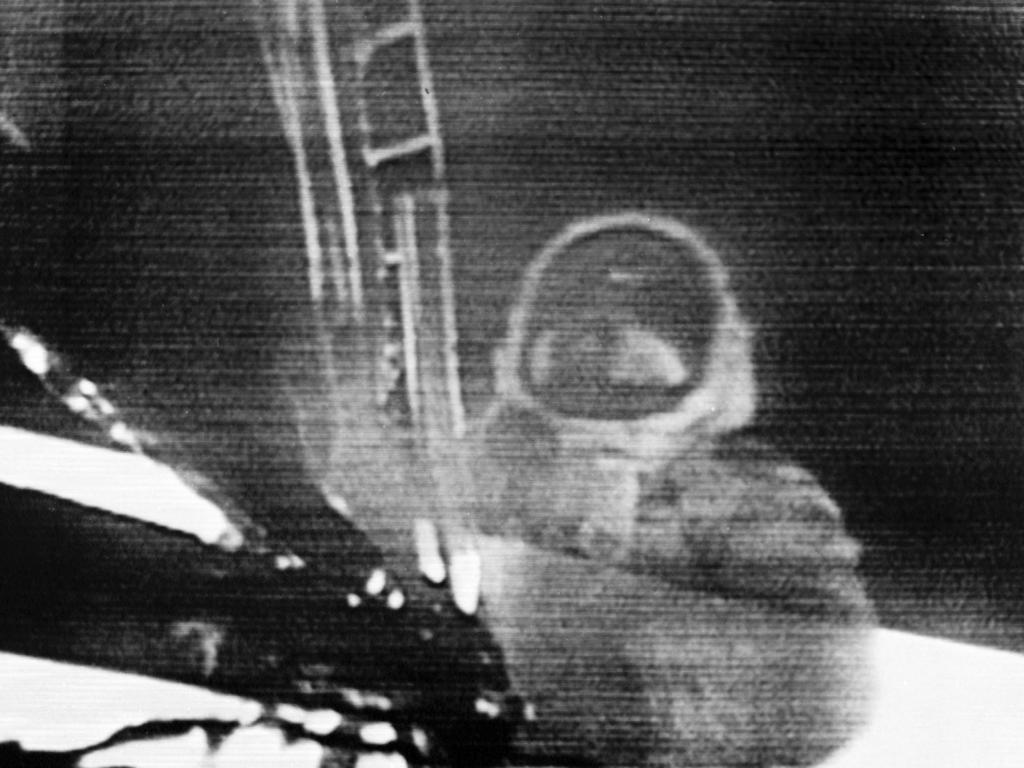
4) ARMSTRONG’S PROMISE TO HIS PANICKED GRAN
Armstrong made a promise to his concerned gran before the Apollo 11 mission.
Elderly Caroline Korspeter told TV crews that her grandson had assured her he wouldn’t step out of the spacecraft on to the Moon if it looked dangerous.
The 82-year-old said of the journey: “I think it’s dangerous. I told Neil to look around and not to step out if it didn’t look good. He said he wouldn’t.”
In the end, Armstrong didn’t have to heed his gran’s warning.
He stepped on to the lunar surface, remarking: “That’s one small step for man, one giant leap for mankind,” before returning safely to Earth days later.
He died in August 2012, aged 82.
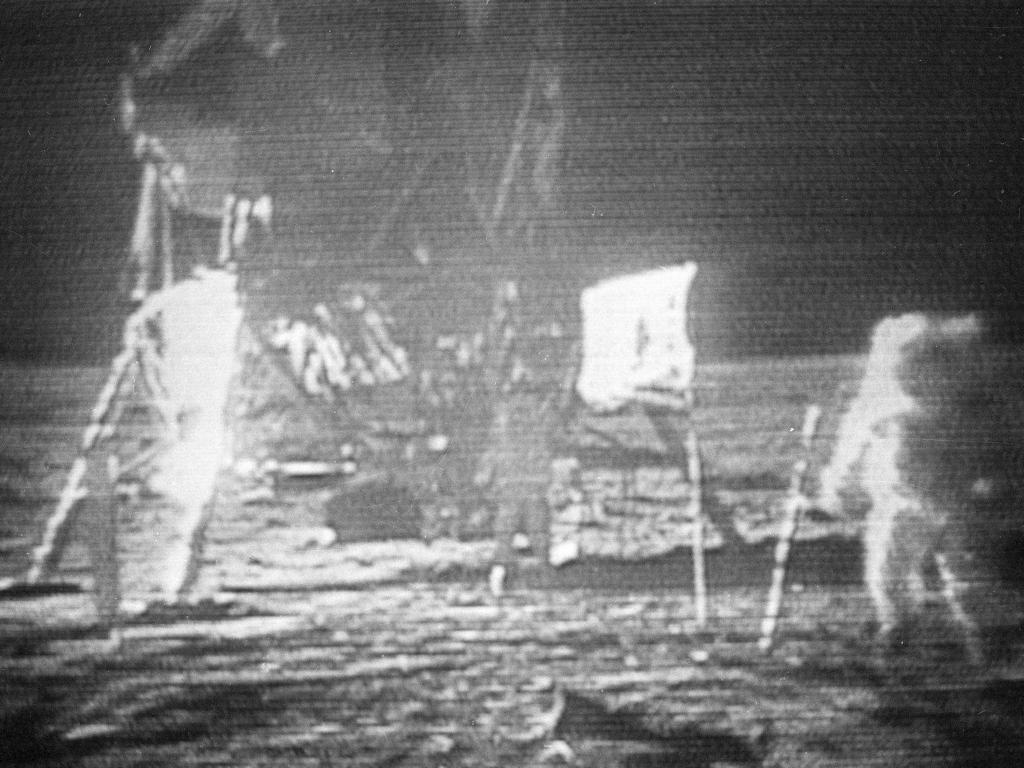
5) APOLLO COMPUTER LESS POWERFUL THAN A CALCULATOR
The Apollo Guidance Computer (AGC) played a key role in the success of the Moon landing, providing interfaces for guidance, navigation and spacecraft control.
Back in the late 1960s, it was a state-of-the-art device. But despite weighing more than 30kg, the computer was actually less powerful than a calculator.
Two popular calculators, used by maths and science students in their exams, were found to be 140 and 350 times faster than the AGC in terms of processing speed.
They also had far more RAM (random-access memory), the Independent reports.
But despite the AGC’s simplicity, it didn’t malfunction once during the mission.
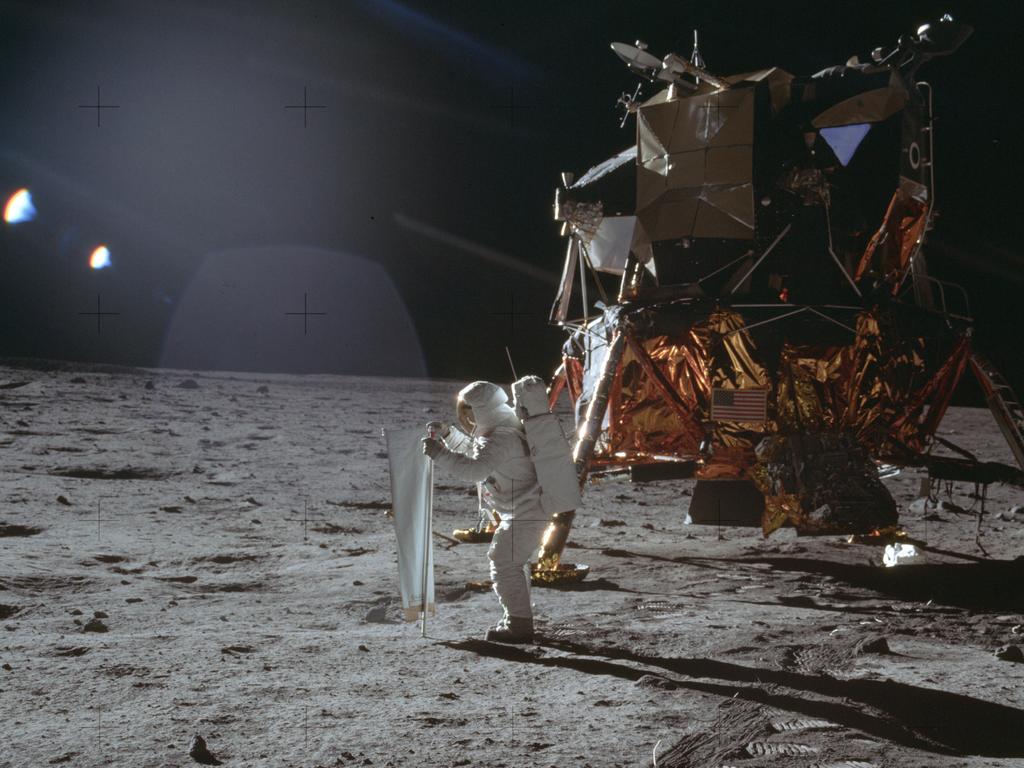
6) THEY LEFT SOUVENIRS ON THE MOON...
Armstrong and Aldrin left a range of items on the Moon before heading back to our planet.
These included a tiny silicon disk, about the size of a 50-cent piece, containing messages of peace from 73 leaders across the world — including the Queen.
Her Majesty’s message read: “On behalf of the British people I salute the skill and courage which have brought man to the Moon. May this endeavour increase the knowledge and wellbeing of mankind.”
Other souvenirs left behind on the lunar surface included the American flag, a small replica of an olive branch, and a plaque proclaiming “Here men from the planet Earth first set foot upon the Moon. July 1969, A.D. We came in peace for all mankind.”
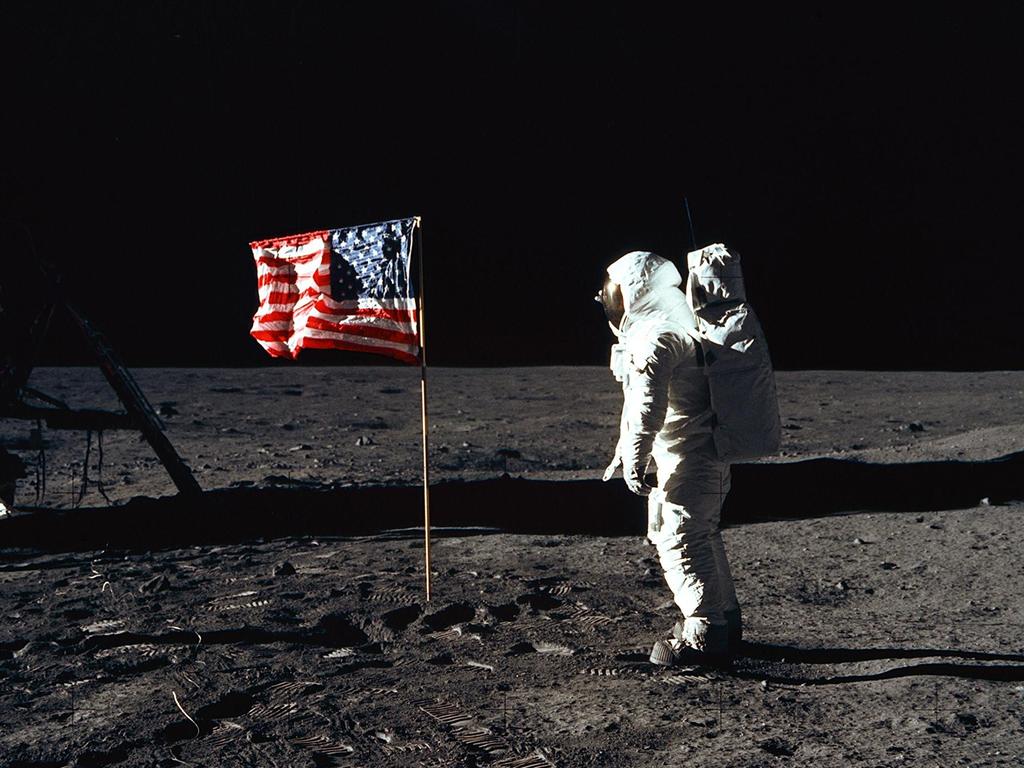
7) ... AND THEY BROUGHT SOME BACK
The astronauts returned to Earth with some Moon souvenirs — including rocks, dust and other lunar samples, which have since been studied by scientists across the globe.
They also brought back their bags of faeces.
After landing back on Earth, Armstrong, Aldrin and Collins — who flew the command module in lunar orbit during the mission — were placed in quarantine.
They were examined by scientists until it was sure they wouldn’t contaminate the planet.
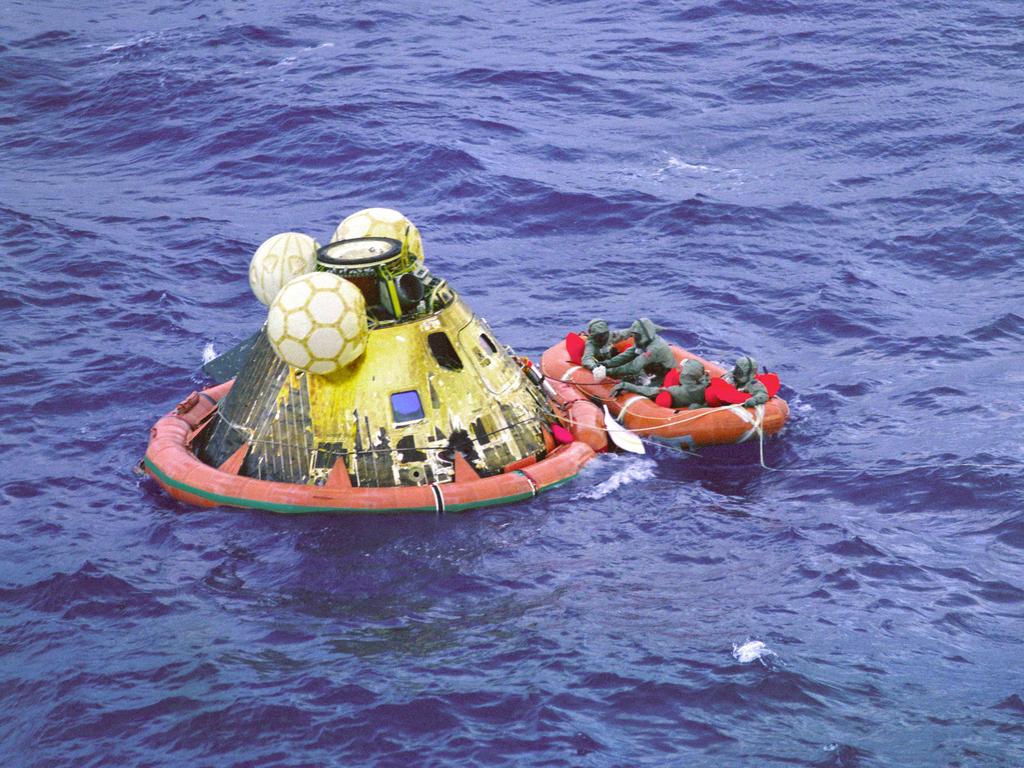
8) HOW A FELT-TIP PEN GOT THEM HOME
The astronauts were actually seconds away from never making it home after one of the ship’s most important switches broke — until a felt-tip pen saved the day.
The circuit breaker that activated the ascent engine, getting the group off the Moon, broke during the mission, according to Jonathan Mayo’s book Titanic: Minute By Minute.
Facing seemingly certain death, Aldrin thought outside the box and decided to use the pen to flick the switch instead. Fortunately for him and the rest of the crew, it worked.
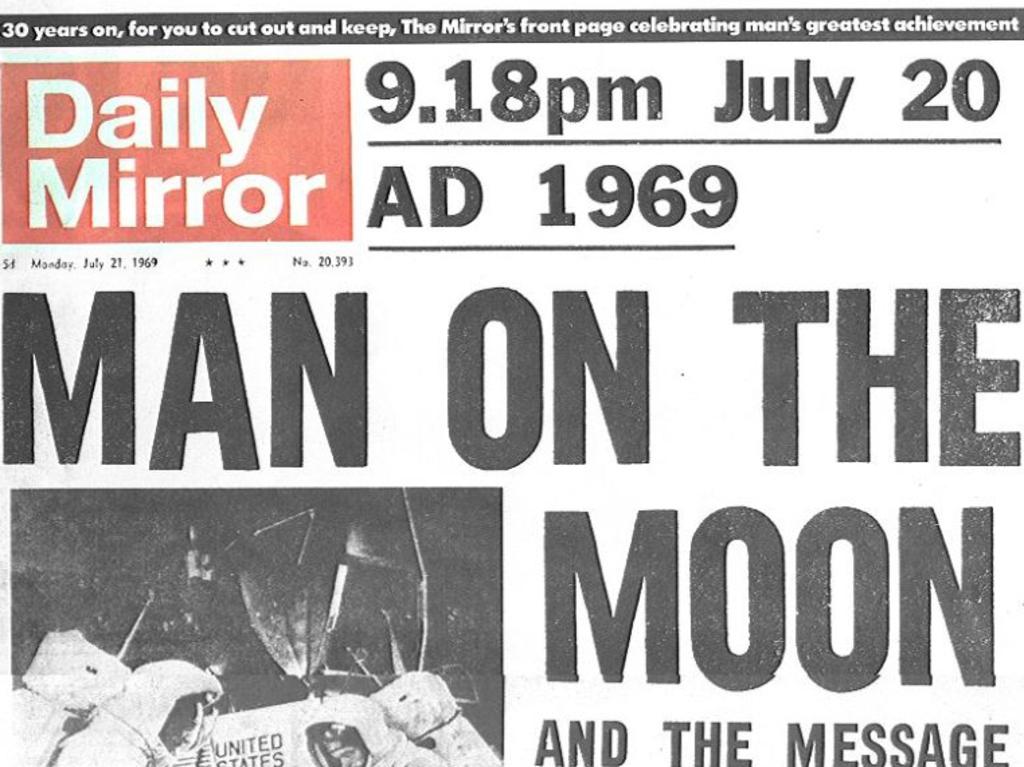
9) THEY COULD HAVE BEEN ABANDONED ON THE MOON
There were plans to abandon the astronauts on the Moon if things didn’t go as planned.
A speech, titled “In the Event of Moon Disaster”, was prepared for then-US President Richard Nixon to read on TV in case Armstrong, Aldrin and Collins became stranded.
If this had happened, Mission Control would have stopped communicating with the trio and Nixon would have rang each of their partners to break the news, Sky reports.
He would have then made his speech, including the words: “These brave men, Neil Armstrong and Edwin Aldrin, know that there is no hope for their recovery.
“But they also know that there is hope for mankind in their sacrifice.”
The speech, which was reportedly penned by White House speechwriter Bill Safire on July 18, 1969, never had to be read out after the mission succeeded.
10) THEY WERE MET WITH A ‘GUNPOWDER’ SMELL
The Moon’s smell would have likely been the last thing on Armstrong’s mind as he stepped out on to it — but astronauts have since compared the powerful scent to gunpowder.
Harrison ‘Jack’ Schmitt, who walked on the lunar surface during the Apollo 17 mission, claimed that “everyone’s instant impression of the smell was that of spent gunpowder”.
He continued: “Not that it was ‘metallic’ or ‘acrid’. Spent gunpowder smell probably was much more implanted in our memories than other comparable odours.”
It has been claimed that the mysterious smell may be the result of the astronauts’ nasal membranes reacting to the electrically-charged dust on the Moon.
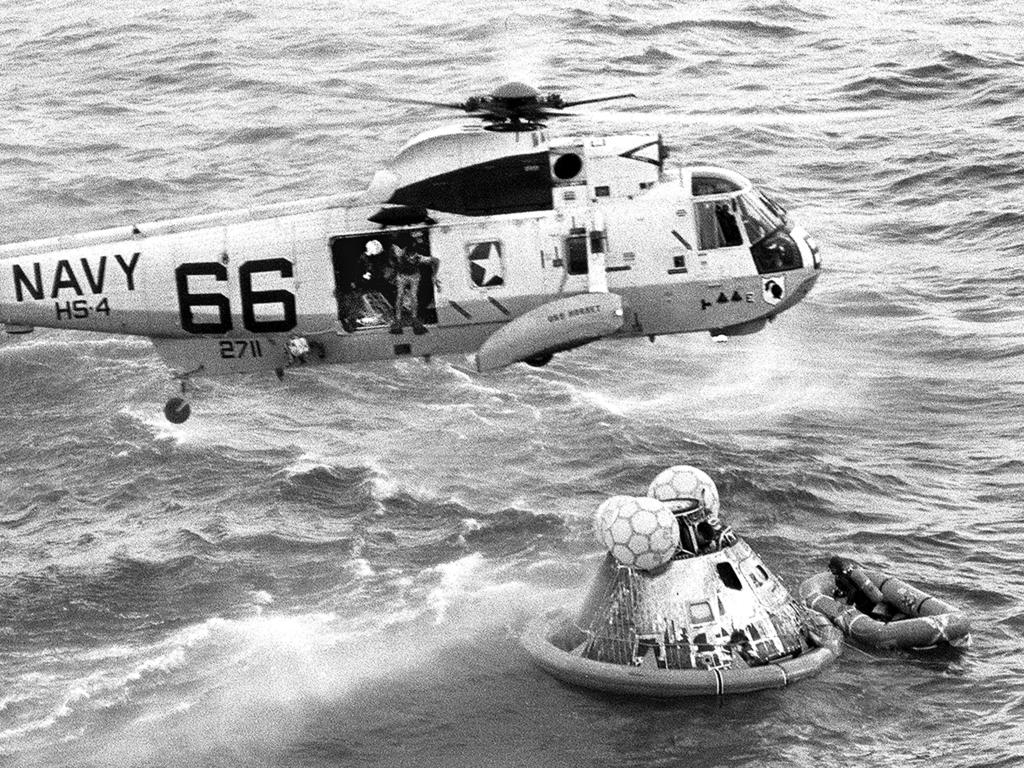
11) SOME PEOPLE STILL DON’T BELIEVE IT HAPPENED
Despite all the evidence to the contrary, some people still think the Moon landing was fake.
In 1976, seven years after the historic spaceflight, an American man called Bill Kaysing published a pamphlet claiming that the landing had been staged by NASA in a studio.
The document, called We Never Went to the Moon: America’s Thirty Billion Dollar Swindle, sparked a range of conspiracy theories that are still very much alive today.
Kaysing, who died in 2005 aged 82, cited the lack of stars in photos, the flag ‘waving’ and shadows at different angles as evidence for his conspiracy.
Although the theories have been debunked by many experts, a shocking one in six Brits recently agreed with the statement: “The Moon landings were staged.”
This story was originally published in The Sun and is reprinted with permission.



